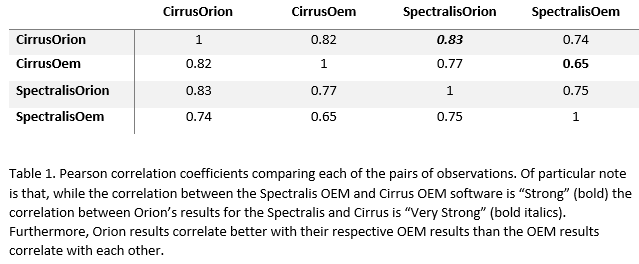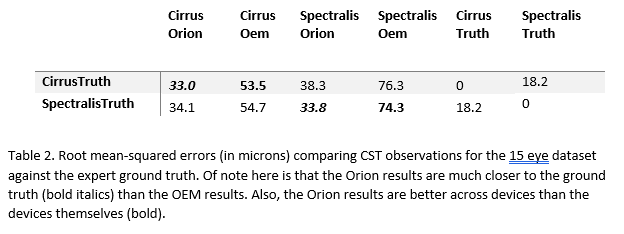Orion vs. Cirrus vs. Spectralis
In order to fulfill recruitment goals, large clinical trials must necessarily use images from numerous sites utilizing different imaging vendor systems. For OCT images, limitations in image segmentation with the original equipment manufacturer (OEM) software and differences between the algorithms used by the different OEM software programs can introduce bias that can negatively affect study data. Analyzing all OCT images in a single software platform with enhanced segmentation capability can reduce errors and improve accuracy, particularly in diseased eyes. We performed a validation study comparing the analyses of OCT images using a third-party segmentation software with the OEM segmentation software of two leading OCT system manufacturers.
The study concluded that using a common platform software to analyze OCT images from multiple system manufacturers provides for a reduction in variability of automated outputs as well as potential a more streamlined workflow for reading centers tasked with evaluating images across multiple sites in large clinical trials. The results from this study will be presented at ARVO in New Orleans.
The study consisted of a total of 131 eyes from a population of 67 subjects with neovascular AMD. The eyes were imaged twice, once with a Spectralis OCT camera and once with a Cirrus. Segmentation was performed using the OEM software and compared to the same segmentation from Orion.

An expert manually segmented 15 eyes randomly selected from the dataset and a comparison was made to the ground truth segmentation as well:

